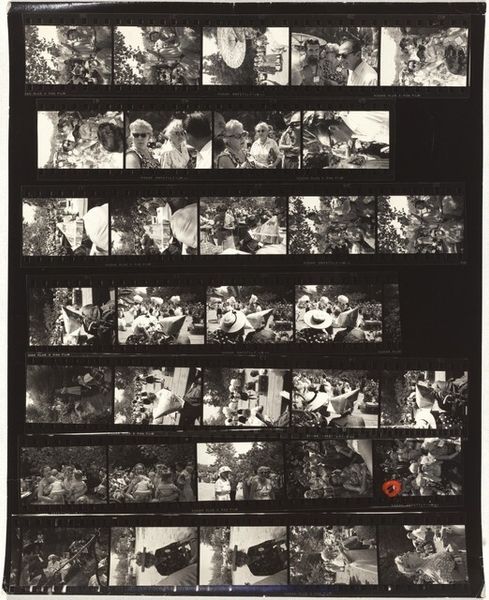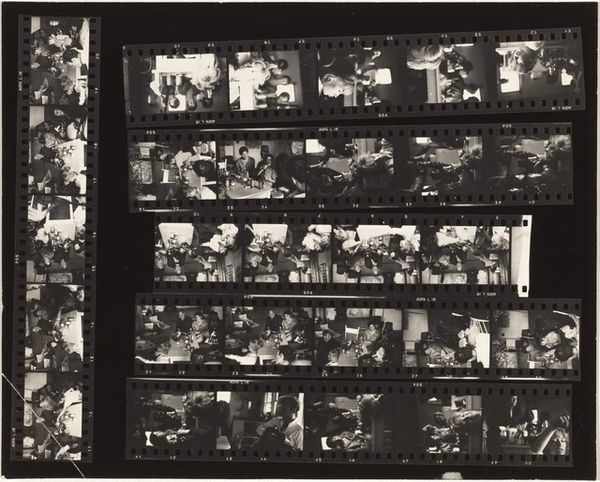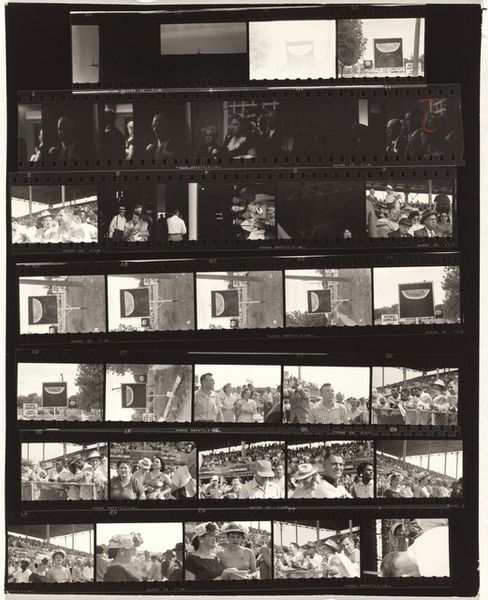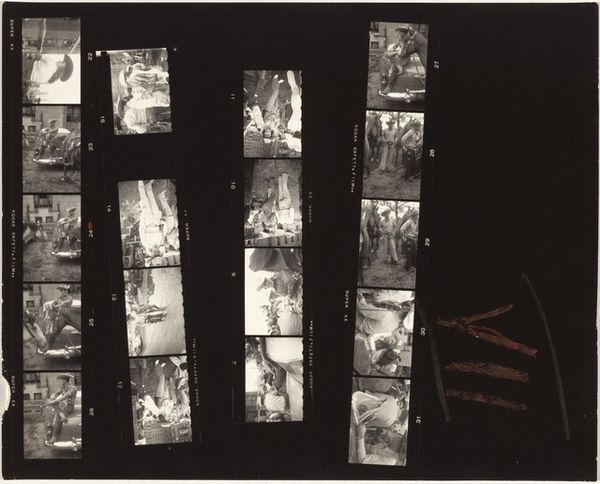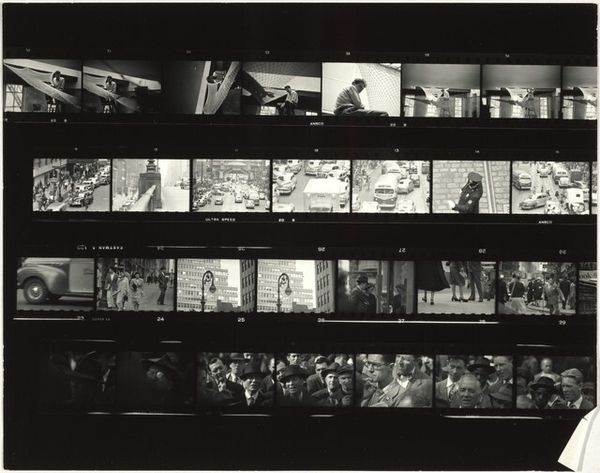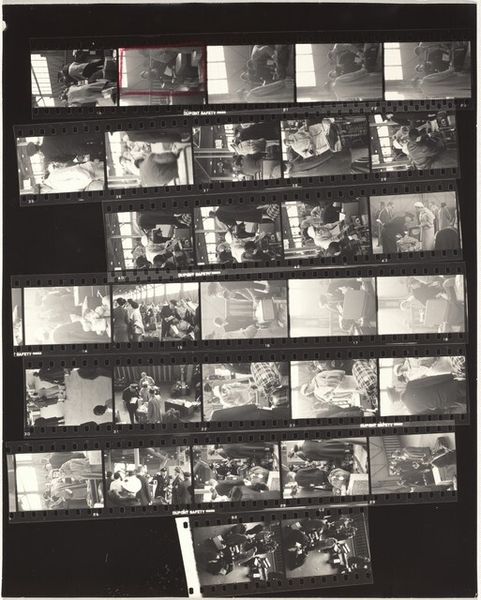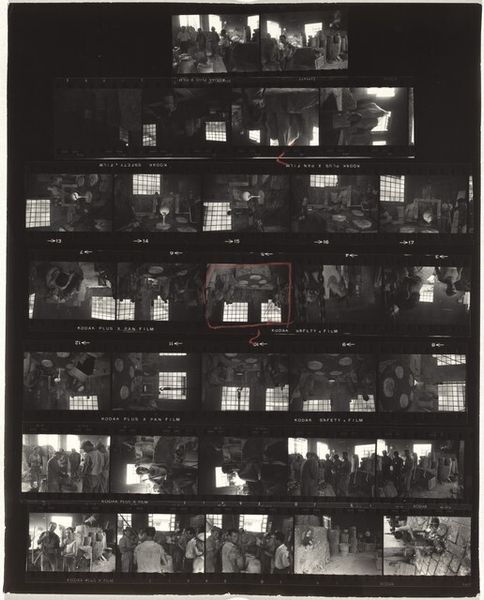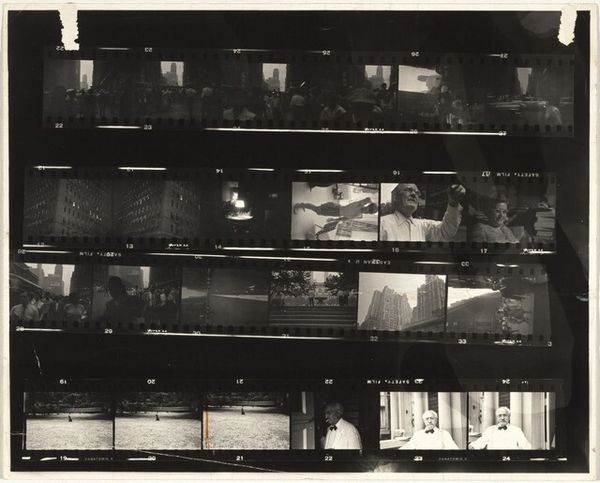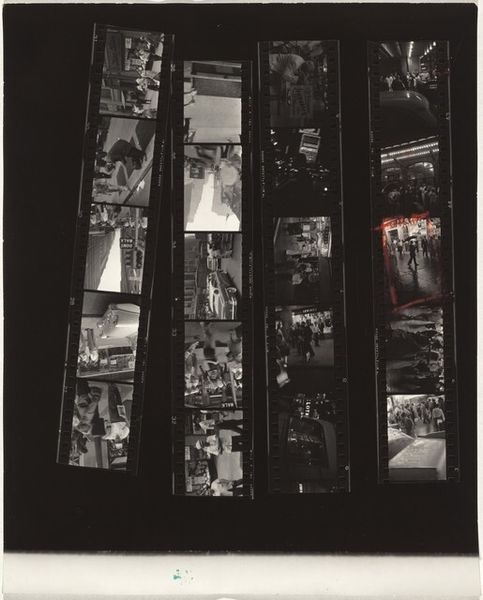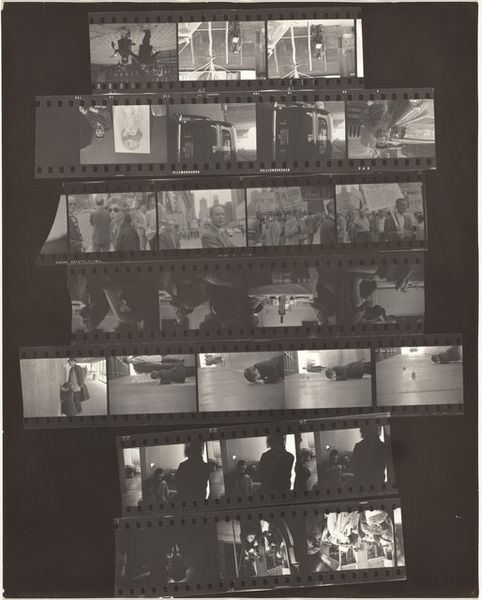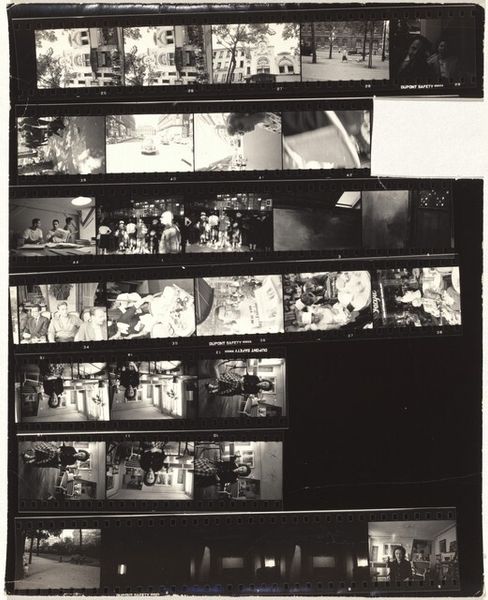
Dimensions: overall: 25.3 x 20.3 cm (9 15/16 x 8 in.)
Copyright: National Gallery of Art: CC0 1.0
Curator: Robert Frank’s “Toy Ball C1”, a gelatin silver print from 1954, offers us a peek behind the curtain of a mid-century soiree. Quite a contrast to the street scenes he's also known for. What’s your initial read on this strip, seeing all these frames together? Editor: Immediately, there's a kind of restless elegance to it. Each tiny, silvered vignette glows with an almost desperate charm. You can almost hear the clinking glasses, the murmur of polite conversation…but beneath it, a sense of claustrophobia, or constraint, pervades. Curator: You’ve nailed it, I think! The composition, though seemingly casual, almost deliberately obscures. There's this overwhelming focus on what I can only guess were members of high society and their elaborate feasts. How does this type of photographic work connect, in your opinion, to Frank's broader engagement with postwar America? Editor: Precisely by *not* engaging directly. It's an almost anthropological study of the rituals of the elite, conducted by a man who often turned his lens to the marginalized. You see this kind of photographic work, and think who exactly is being left out of the frame? What is it saying, in essence, about privilege? Curator: So true, I hadn’t thought about what the decision to document the rich is trying to say. Tell me more? Editor: I'd argue that in showing these scenes of upper class merriment, it subtly underscores the disparities, the vast inequalities that shaped America during that period. Even its "discreet" and monochrome format helps frame social events, not simply as parties, but more like official ceremonies, that reveal far more in between frames, than the party itself. The question becomes, for whom is society actually functional? Curator: Indeed. It leaves you with this niggling feeling, doesn’t it? Frank’s photographs rarely provide easy answers, but open new sets of questions. And his dedication for taking them into places and about social dynamics otherwise invisible really captures what his images meant to achieve. Editor: Ultimately, "Toy Ball C1," beyond its surface elegance, feels like an almost unnerving document of its era—a testament to Frank’s complex relationship with a society he simultaneously observed and critiqued. Thank you, Robert, for opening our eyes! Curator: It makes you wonder about whose history we choose to illuminate. It is the untold part that speaks loudest in his gelatin silver prints! Thank you.
Comments
No comments
Be the first to comment and join the conversation on the ultimate creative platform.

